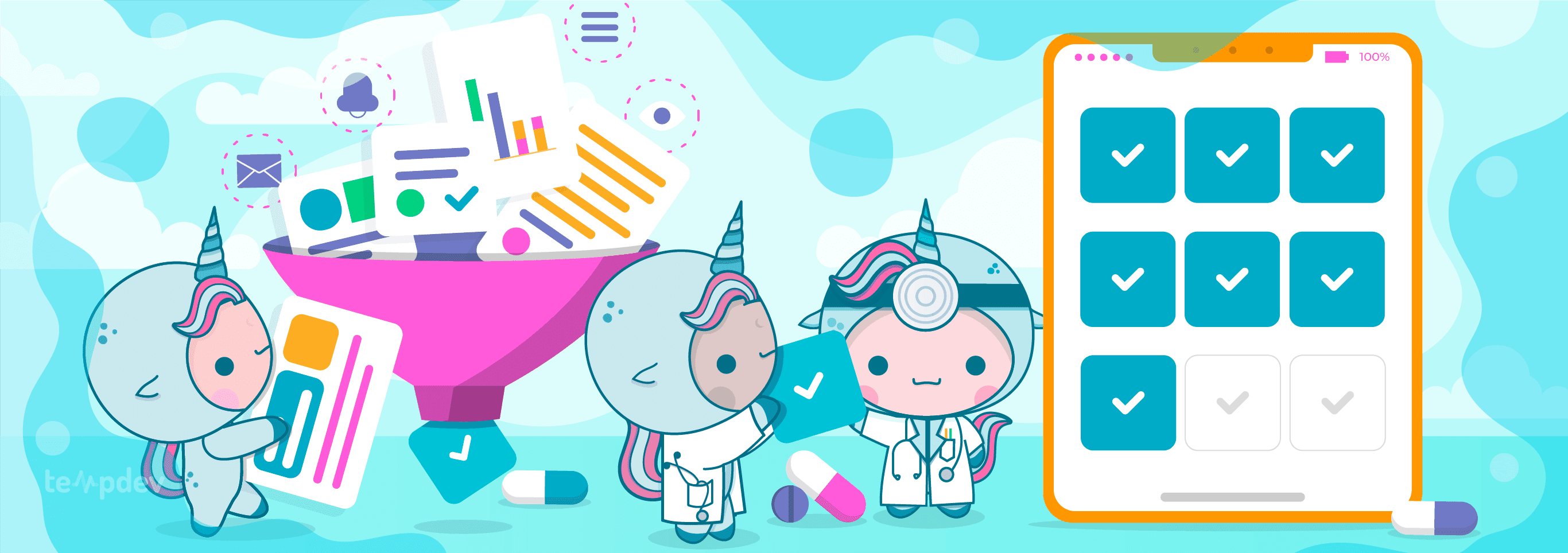
EHRs have long been a touchy issue for physicians, nurses, and IT departments within practices. Several studies have noted physicians' frustrations, concerns, and the need to minimize EHR usability issues over the past decade. In the 21st Century Cures Act, Congress finally started to take note and built EHR usability into future regulatory requirements.
The Department of Health and Human Services released a lengthy strategy back in February 2020 focused on reducing the clinical burden of EHRs. This strategy emphasizes:
Decrease EHR charting time and labor needed for documenting a patient visit
Lessen the complexity required to meet regulatory reporting requirements for physicians and nurses
Improve the usability, functionality, and intuitiveness of EHRs
The report is a follow up to an initial strategy along the same lines drafted in November 2018, which included 43 recommendations for usability and documentation. The overarching goal is for physicians to spend less time on the computer and more time with their patients.
EHR usability issues are just one of several areas that burden clinicians and leads to physician burnout, but it is significant and could impact the entire trajectory of healthcare delivery.
Efficient Data Entry Reduced EHR Usability Issues
Having a complete medical record for a patient is ideal. However, physicians and nurses should be taking care of patients and not performing data entry tasks. Optimizing your EHR with NextGen patient registration tools to help with this data entry burden and a number of benefits included if implemented.
An efficient data entry process will allow for increased productivity among healthcare professionals. This could be done by making the process a team effort or by assigning one or two members of the team to data entry. There are vendors who specialize in EHR data abstraction that reduces the data entry the burden on clinicians. Investing in interoperability solutions with hospitals, labs, radiology, and medications can significantly improve the experience and minimize manual data transfer needs.
Work with Clinicians
Partnering with clinical stakeholders including physicians, nurses, therapists, and care managers, will assist in improving clinical documentation best practices. Utilize the users actually working in the EHR to give you feedback and guide your improvement strategy. Listening, understanding, and empathizing with their experience is the solution to improving usability.
Improve Workflows
Perform a detailed workflow analysis to understand the real world procedures clinicians are utilizing. Once the process is documented, work with developers to align the EHR workflow to meet the actual workflow. Emphasize advancing clinical decision support, documentation, and presentation of data within the EHR.
Affordability
A cheaper EHR system ultimately becomes an expensive system if it is inefficient. Complete a cost analysis, including predictive loss of productivity, on your EHR systems, and decide if it is the right fit. Ensure the EHR is certified and has an intuitive and interactive interface for sending and receiving pertinent information. A consulting firm, such as TempDev, can help you boost your EHR system's efficient use.
Training
EHR systems may be challenging causing EHR usability issues, but it doesn't mean that they are not learnable. If you cannot change or optimize your current system, consider setting up a couple of training sessions for the physicians and healthcare professionals in your organization who use it most. This training can be in the form of an interactive discussion, a PowerPoint presentation, or an open forum or town hall. It is especially helpful to bring in outside consultants who may know other ways of utilizing the EHR that your organization may not have implemented. In fact, TempDev trainers are all NextGen Certified Professionals (NCP) and have experience working with all specialties in NextGen. They can create custom-tailored training materials as well as recorded training sessions. Additionally, while each team member may not need to learn the entire system, consider compartmentalizing training sessions. Provide role-based training of specific workflows and share what is needed for just their responsibilities and avoid "information overload." Have superusers for each role participate in multiple trainings to help support their peers.
Efficient and Accurate Documentation
Many EHR systems have ways of creating efficient and accurate documentation that does not require an excessive amount of time. Becoming an expert at charting by exception, creating quick saves, and macros for repetitive documentation will significantly improve usability. Emphasize reducing the number of clicks while still maintaining an accurate record, to improve EHR usability issues.
Move to a hosted environment
Many companies outside of the healthcare industry have found great success in migrating on-prem resources to managed services solutions, including those based on cloud architectures. It makes sense that healthcare could also find similar success in this area. NextGen clients can use a variety of hosting solutions that offer cost-effective and highly optimized technology. Cloud-based, hosted infrastructures and architectures are agile. They can respond to changing programs, regulations, rapid growth, scalability, and be optimized for maximum security quickly. Even the most optimized EHR can only be considered usable if performance issues do not hamper it.
Minimize EHR Usability Issues
The unsophisticated nature of some EHR software eventually generates competition among vendors and providers to create better and more efficient software. However, stalls in progress have effects upon the broader healthcare community as well as the delivery of quality patient care.
EHR usability and interoperability are essential as many physician groups, healthcare leaders, and regulators push for more evident standards and guidelines. In the meantime, while new features and functionality of EHR systems are developed, physicians and healthcare professionals can take matters into their own hands and take steps to minimize EHR usability frustrations.
TempDev offers vital consulting services to the healthcare IT community. Reduce your EHR usability issues by utilizing their NextGen EHR staff augmentation, NextGen EHR implementation and project management, and NextGen EHR workflow redesign consulting services. Whatever your EHR usability difficulty, TempDev can help you meet it through consultation, training, or other clinical solution services. Contact us here or 888.TEMP.DEV to partner with NextGen EHR consultants and transform your NextGen Healthcare software to support your practice better.
Interested?
Agree with our point of view? Become our client!
Did you enjoy this read? Feel free to share it with your contacts.







